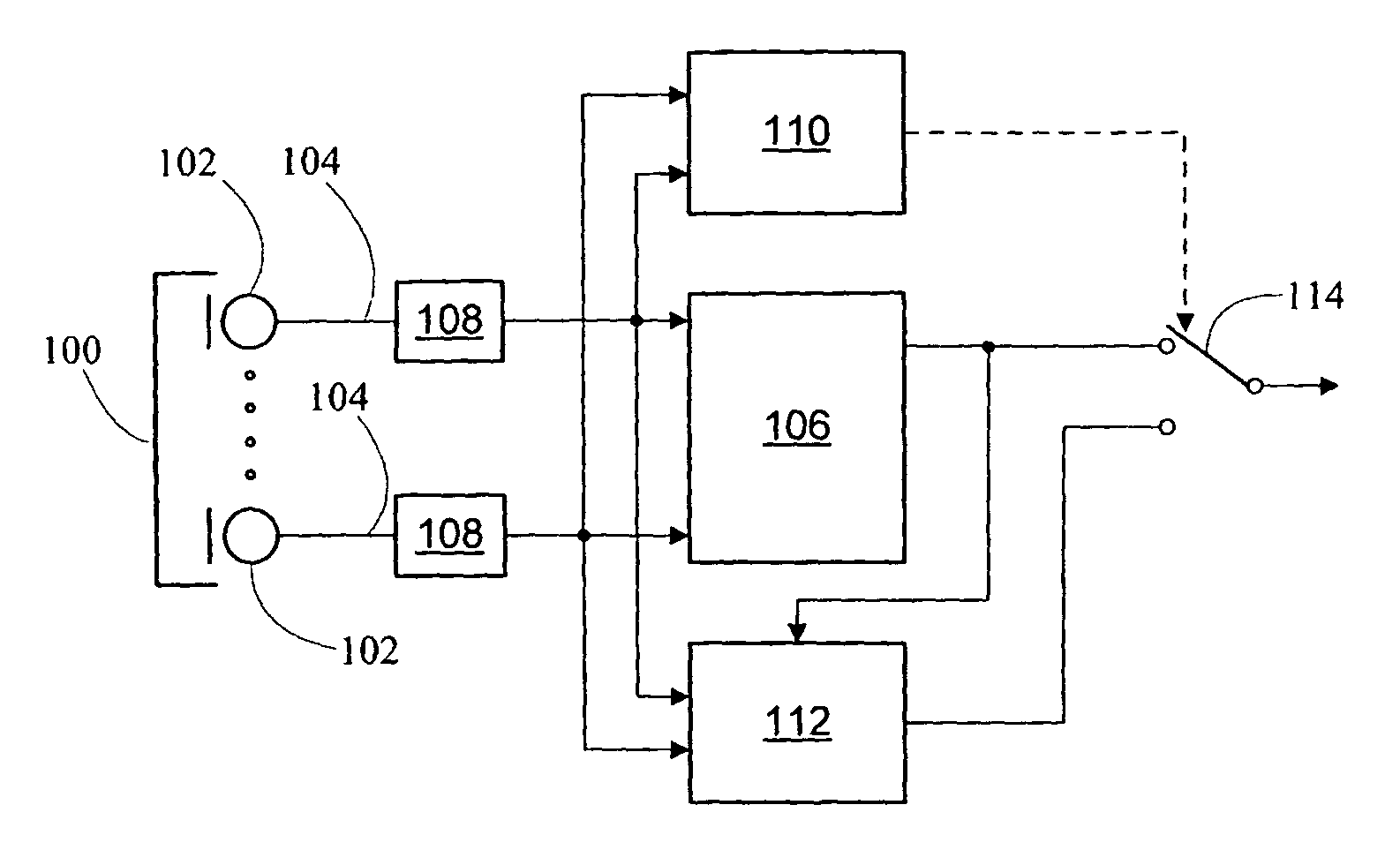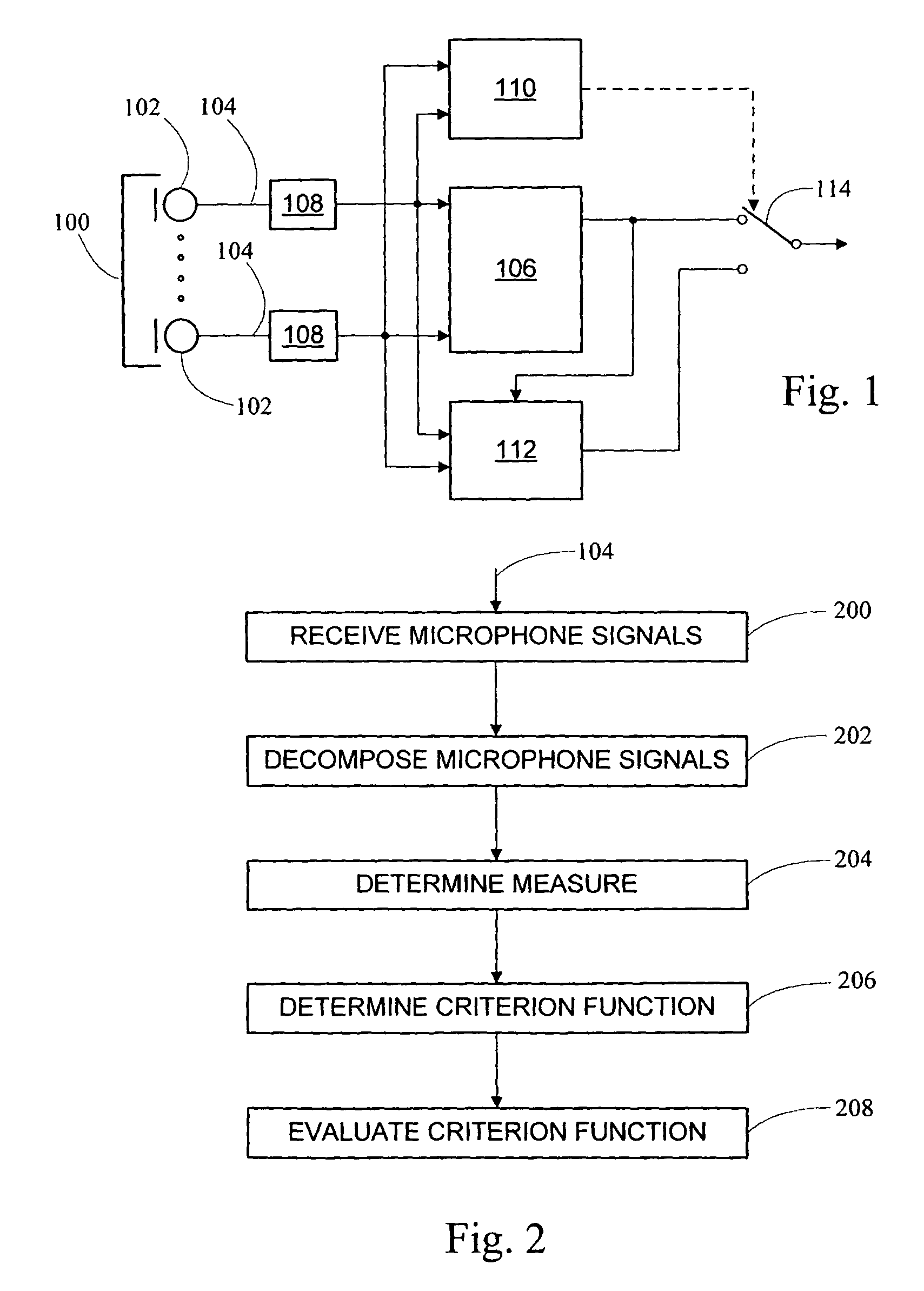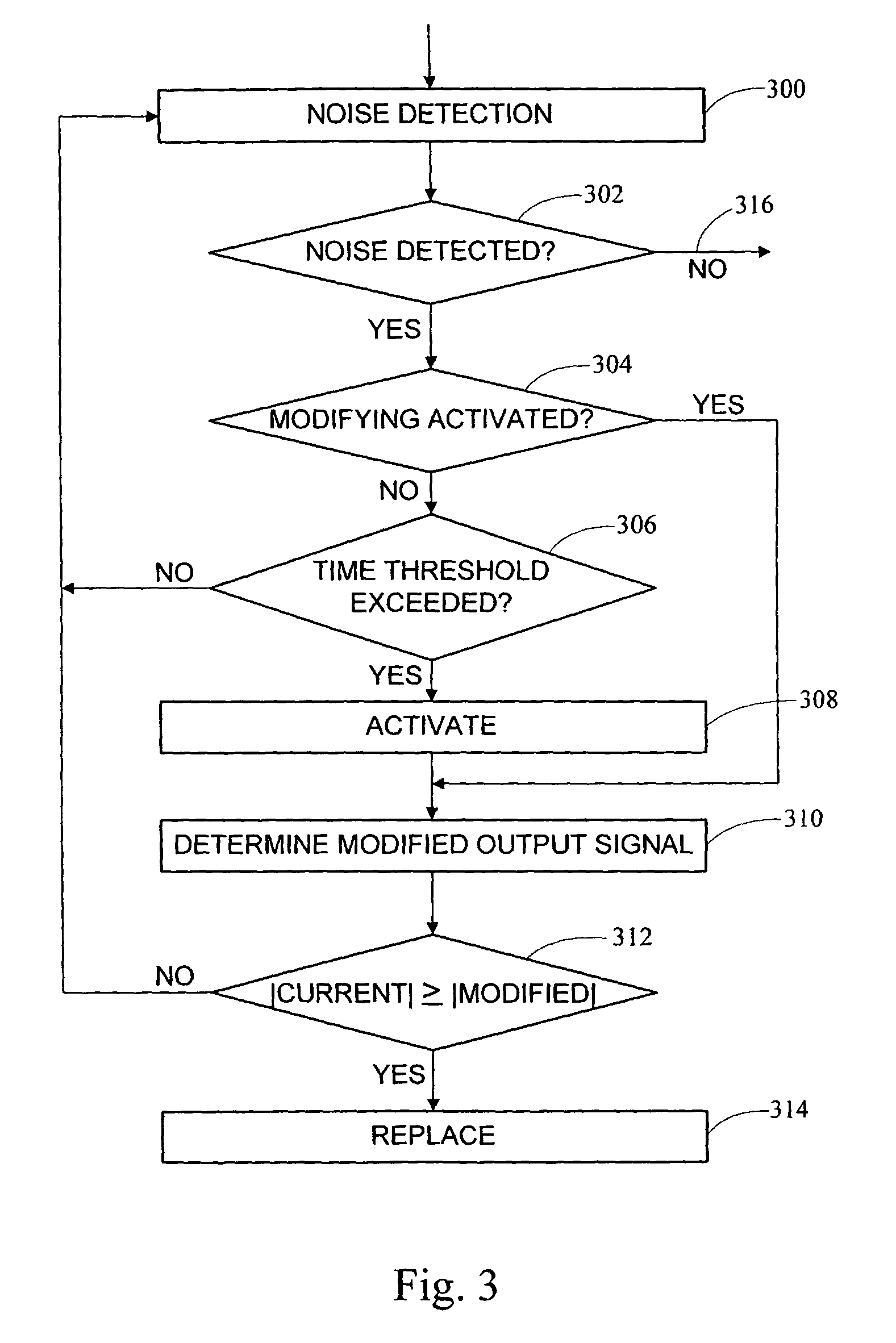System for detecting and reducing noise via a microphone array
a microphone array and microphone technology, applied in the field of system for detecting noise, can solve the problems of low signal level at the microphone, reduced signal to noise ratio (snr) in comparison to a handset system, and high ambient noise level, so as to reduce noise and reduce noise.
- Summary
- Abstract
- Description
- Claims
- Application Information
AI Technical Summary
Benefits of technology
Problems solved by technology
Method used
Image
Examples
Embodiment Construction
[0022]In FIG. 1, an example of a system for reducing or suppressing noise is shown. A microphone array 100 with at least two microphones 102 is shown. While a particular arrangement of the microphones 102 in the microphone array 100 is shown, different arrangements of the microphones 102 are possible. For example, the microphones 102 may be placed in a row, where each microphone 102 has a predetermined distance to its neighbors. For example, the distance between microphones 102 may be approximately 5 cm. Depending on the application, the microphone array 100 may be mounted at a suitable place. For example, in the case of a vehicle or a vehicle cabin, the microphone array 100 may be mounted in the driving mirror near the roof of the vehicle, or in the headrest. In this application, the term vehicle includes an automobile, motorcycle, spaceship, airplane and / or train, or any other means of conventional or unconventional transportation.
[0023]Microphone signals 104 emanating from the mi...
PUM
 Login to View More
Login to View More Abstract
Description
Claims
Application Information
 Login to View More
Login to View More - R&D
- Intellectual Property
- Life Sciences
- Materials
- Tech Scout
- Unparalleled Data Quality
- Higher Quality Content
- 60% Fewer Hallucinations
Browse by: Latest US Patents, China's latest patents, Technical Efficacy Thesaurus, Application Domain, Technology Topic, Popular Technical Reports.
© 2025 PatSnap. All rights reserved.Legal|Privacy policy|Modern Slavery Act Transparency Statement|Sitemap|About US| Contact US: help@patsnap.com



